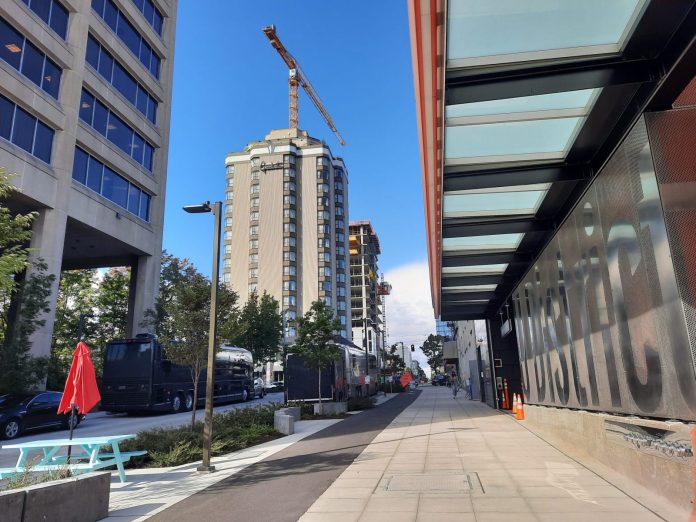
Northgate Link, which just opened as of today, has already transformed the neighborhoods surrounding the three stations on the extension. Northgate Station still does feel like it’s plopped into a mall parking lot, though that will change in time. Roosevelt feels the most completed, having undergone a transition to midrise development over the past five years. The U District, however, feels like one big construction zone with highrises and other large projects going up in all directions. It feels like a burgeoning city in its own right.
The Urbanist has covered this trend as it unfolded, from the initial U District rezone in 2017 to the first tower winning design approval in 2018 to an early development roundup in late 2019 and a comprehensive update in June. The U District has added 2,173 new homes since 2015 and has about twice as many in development. That puts U District well ahead of the other neighborhoods getting a light rail station on Saturday. In his recent development updates, Shaun Kuo tallied more than 4,000 homes new, under construction, or in permitting in Northgate and another another 3,300 in Roosevelt since 2015, but U District is on another level, with more than 6,000 homes completed, underway, or in permitting.
Most of the new units in Northgate are still under construction or in permitting, but Roosevelt has already seen 1,626 new housing units since 2016, a 95% increase, Mike Lindblom reported. Impressive, but the U District still reigns supreme and has much more on the way.
Either station entrance provides a great view of the transformation, with half a dozen towers rising along Brooklyn Avenue. The north entrance is next to Neptune Theater and opposite UW Tower, U District’s tallest tower at 325 feet, though it may soon have company given the new 320-foot and 240-foot zoning in the core of the neighborhood.
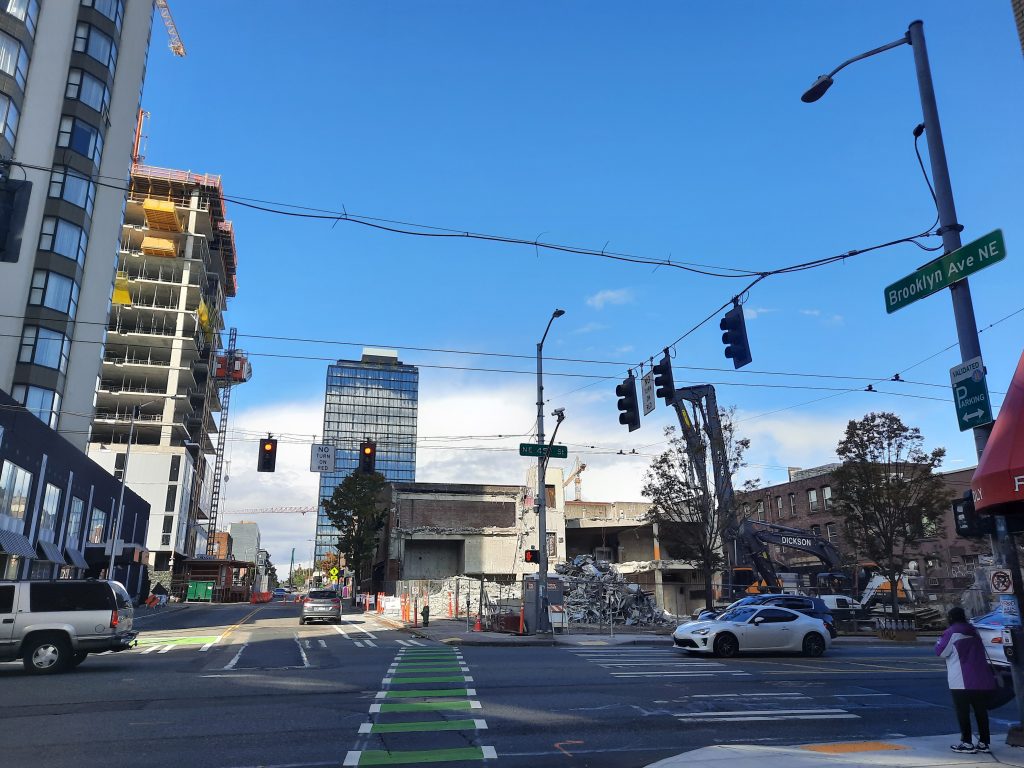
Since most of this wave of development happened via Mandatory Housing Affordability (MHA) inclusionary zoning program, it also has come with major contributions to affordable housing. Developers have mostly opted to pay into the City’s affordable housing trust fund rather than set aside affordable MHA units inside their projects, but the influx of money has helped the City boost investments in social housing. With all the U District construction projects and proposals tallied, Kuo counted $133 million in MHA contributions. For U District highrises, MHA requires either setting aside 9% of units for tenants making less than 60% of area median income or paying a fee of $25.79 per square foot of gross floor area — the fee is adjusted annually to keep pace with inflation.
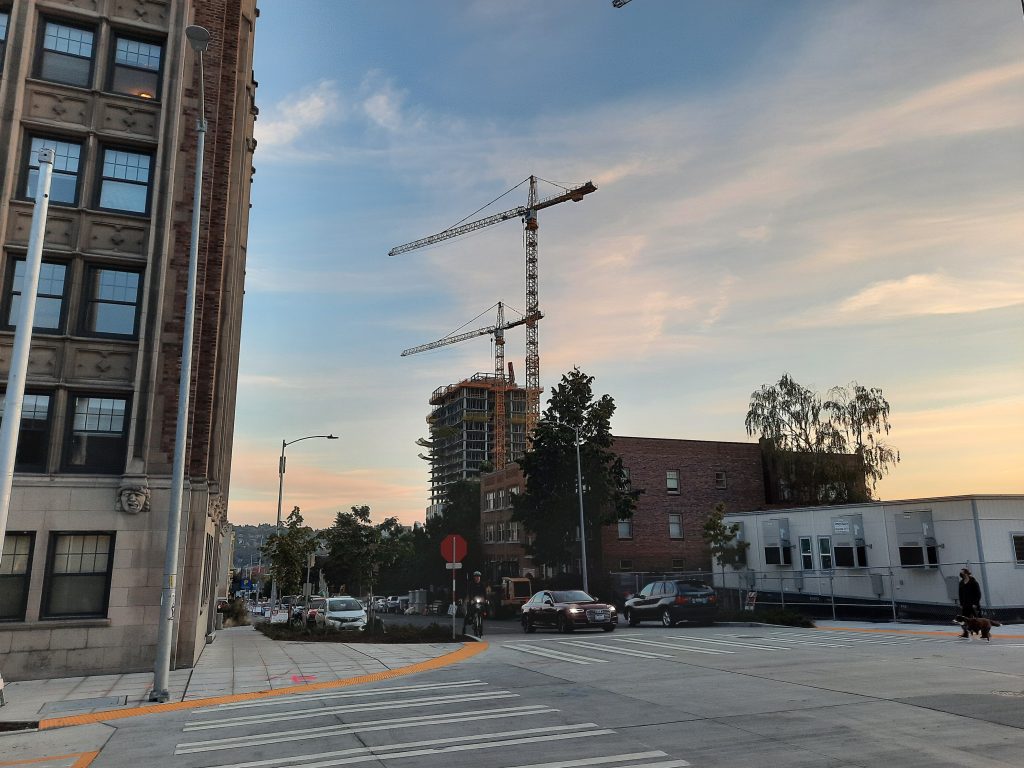
A growing neighborhood for a growing campus
Though station construction is complete, the area between the two station entrances will become a future construction site for a 13-story office building that will rise above the underground station and serve the University of Washington’s (UW’s) growing needs as part of the its plans for ambitious growth over the next decade.
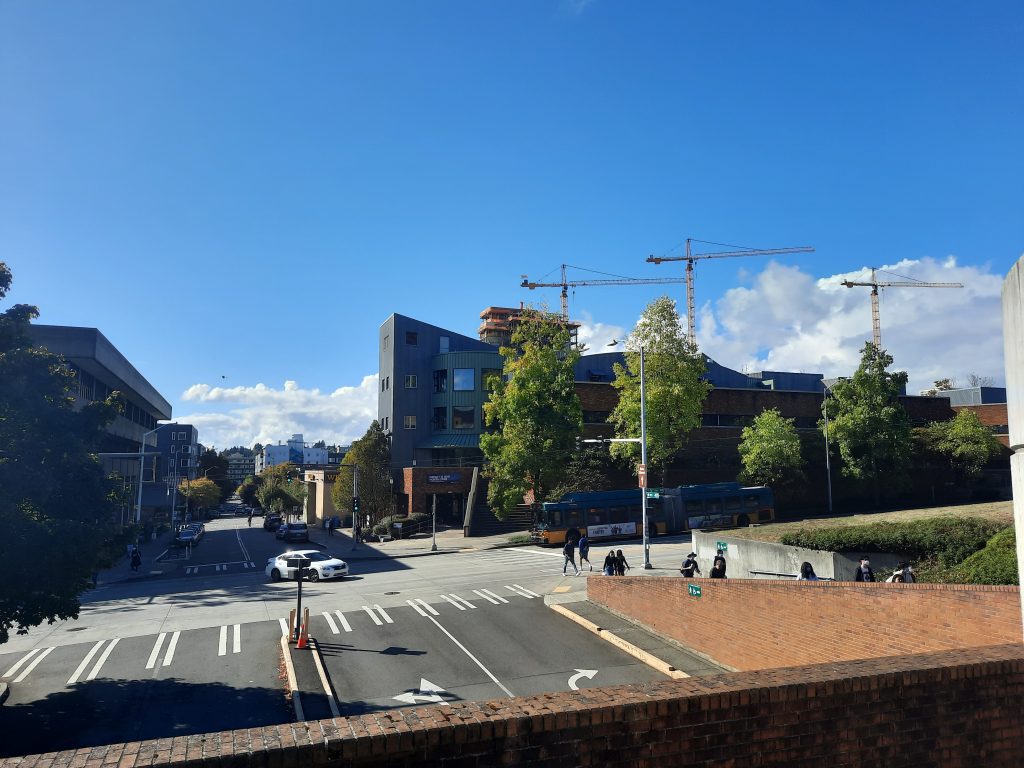
“The university is growing rapidly and planning to add space for thousands of additional students in its master plan–already more than 32,000 undergraduates and 14,000 graduates are enrolled at the Seattle UW campus.” The Urbanist reported in 2019 “The university estimates that space needs at the main campus will grow through 2028 as another 8,675 students and 4,649 faculty are added. That equates to 20% growth over the total student and faculty population of 67,155 today.” The pandemic may have disrupted those goals a bit, but the University is welcoming students back to campus this fall and expecting its momentum to return.
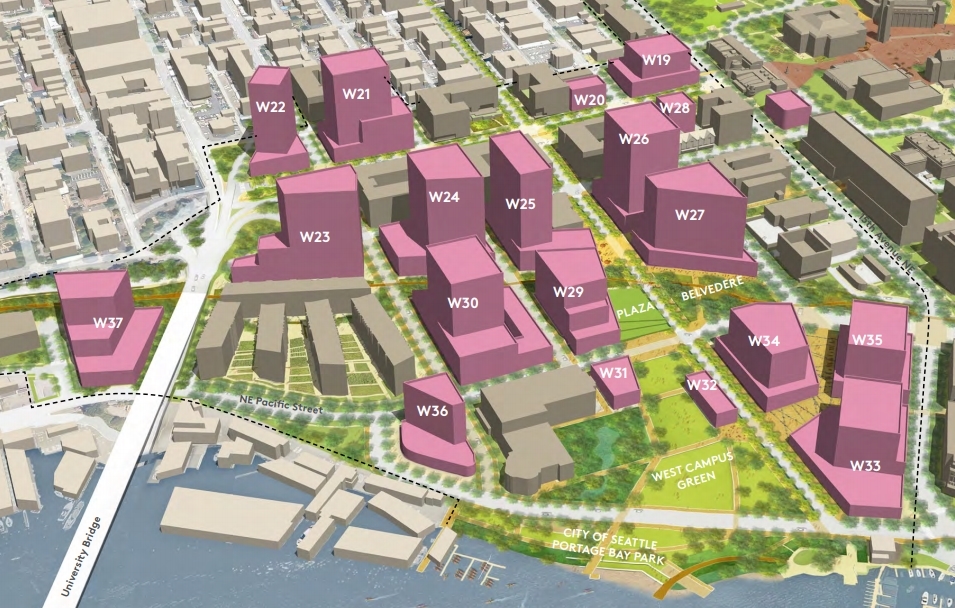
To achieve this 20% growth in campus population, UW is also embracing high-rise development on its campus to fit all the new classroom space. Shaun Kuo detailed some of the large new projects in the works on campus, with UW aiming to add six million square feet of space in a decade. The West and South quadrants of campus would get much of the highrise attention, with towers of up to 240-feet envisioned.
Mapped below are the towers and some of the larger midrise projects on the way in the U District. Orange boxes denote construction sites, while the dark gray boxes are still in the design review and permitting process. Purple connotes completed towers, just “The M” so far.
No sign of drag from inclusionary zoning
Developers are projecting strong demand for housing in the U District and the expected growth in students and staff is a big reason why — and a eight-minute train ride to Downtown doesn’t hurt either. While some thought leaders were skeptical that the U District could support highrise zoning, especially with the intensified MHA requirements that comes with such a large jump in development capacity, it turns out the neighborhood is doing quite well with the zoning and requirements that came with them.
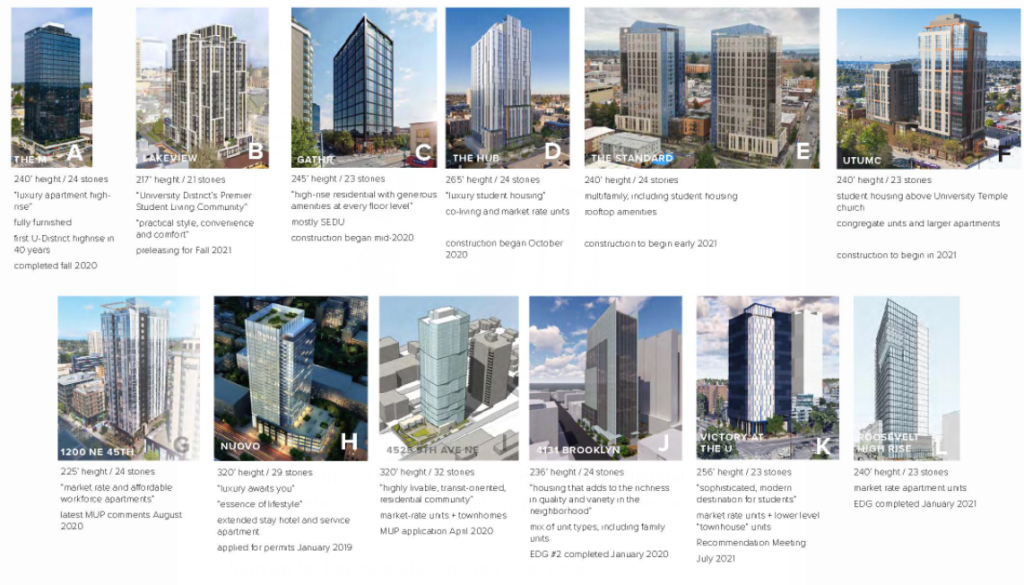
“If passed as proposed, the U District high-rise MHA upzones will not only backfire on affordability by stalling high-rise homebuilding in the U District; they will also hinder the city’s progress on concentrating new homes around the U District’s future light rail station, and thwart equitable access to the neighborhood’s rich employment and educational opportunities,” Sightline‘s Dan Bertolet wrote back in 2017. “Furthermore, if the city sets the wrong precedent in the U District, it will likely ‘lock in’ the same affordability-defeating MHA requirements for other neighborhoods, such as Northgate, where high-rise construction is at best marginally feasible today.”
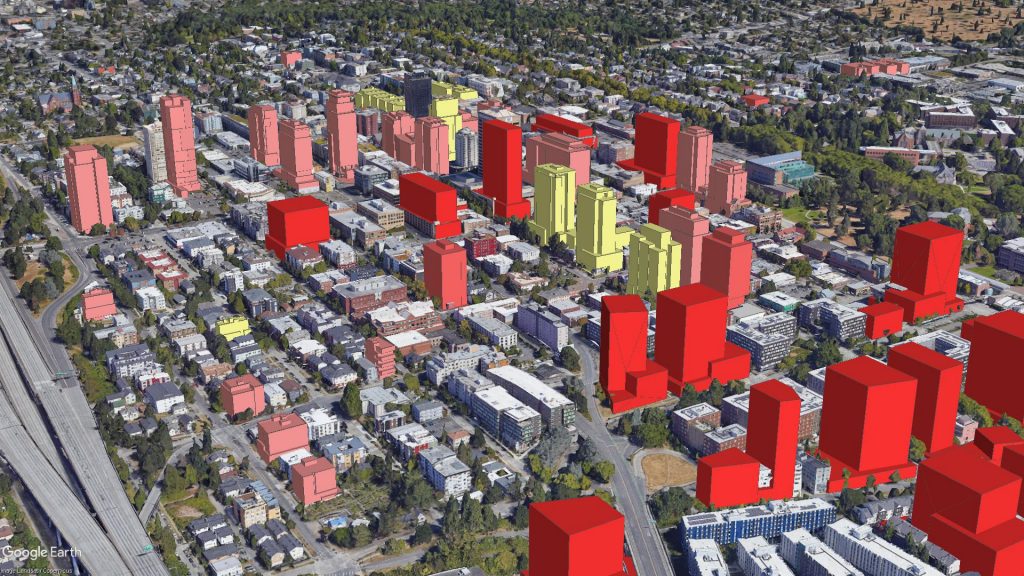
The U District is awash in highrise projects, so the first prediction didn’t come to pass — but the jury is still out on the second point about Northgate. Northgate has seen plenty of development, but it’s yet to see its first highrise proposal. This has much to do with the fact Northgate’s highrise zoning is on land owned by mall overlord Simon Property Group, which has been careful to phase those riskier projects toward the end of the redevelopment.
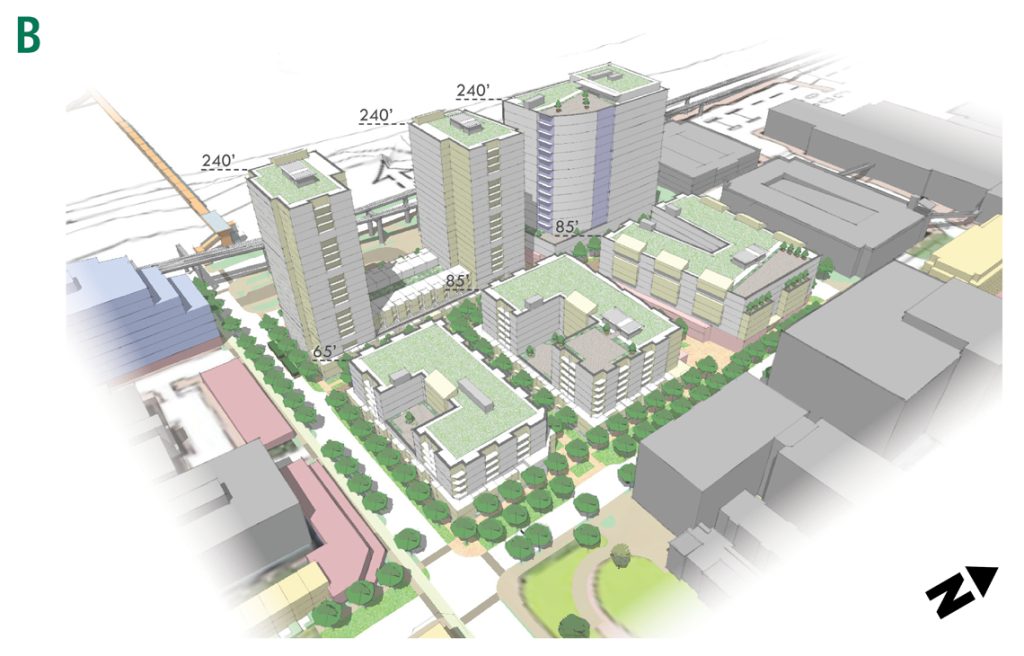
Likewise the County opted to play it safe with a midrise social housing project on a small portion of a large publicly owned land near Northgate Station (after bungling an earlier Request for Proposals) rather than immediately try to develop an affordable high-rise like the one coming to First Hill. Perhaps the County and Simon will find a way to make high-rises work in Northgate, but for now the U District is the only bastion of ongoing highrise development in North Seattle.
Walk around the U District and your bound to run across a construction site, as demonstrated by the photo tour below.
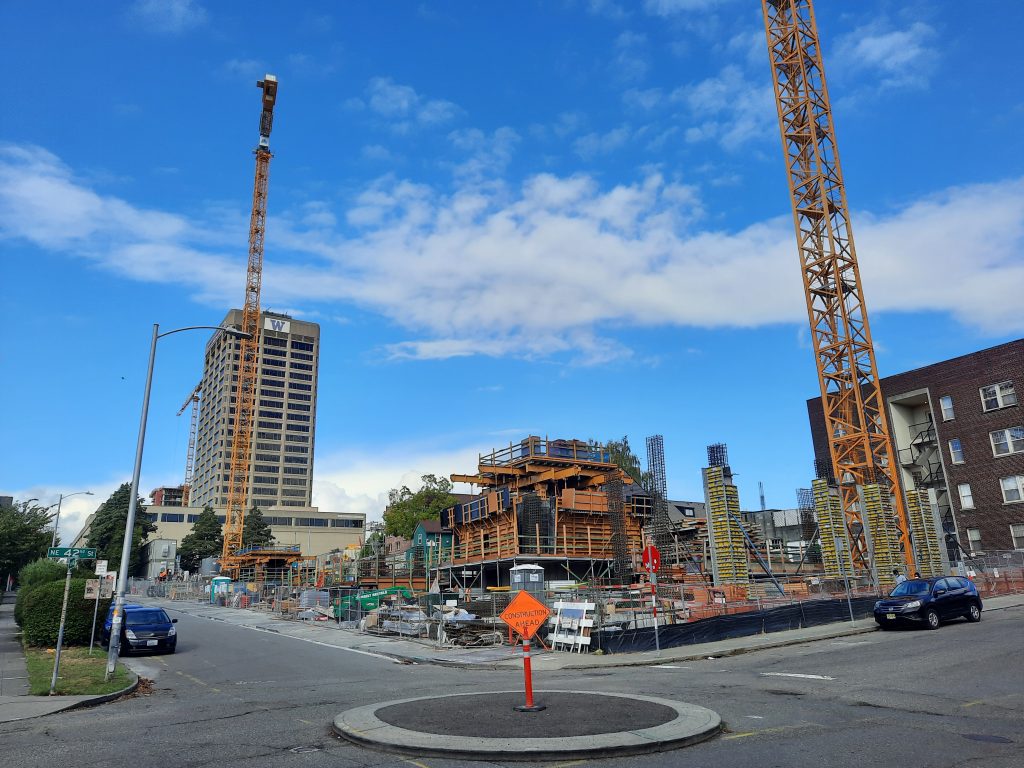
This large site will be The Standard, twin 25-story towers comprising 402 homes. U District Station is just east of UW Tower, which stands in the background. (Photo by Doug Trumm) 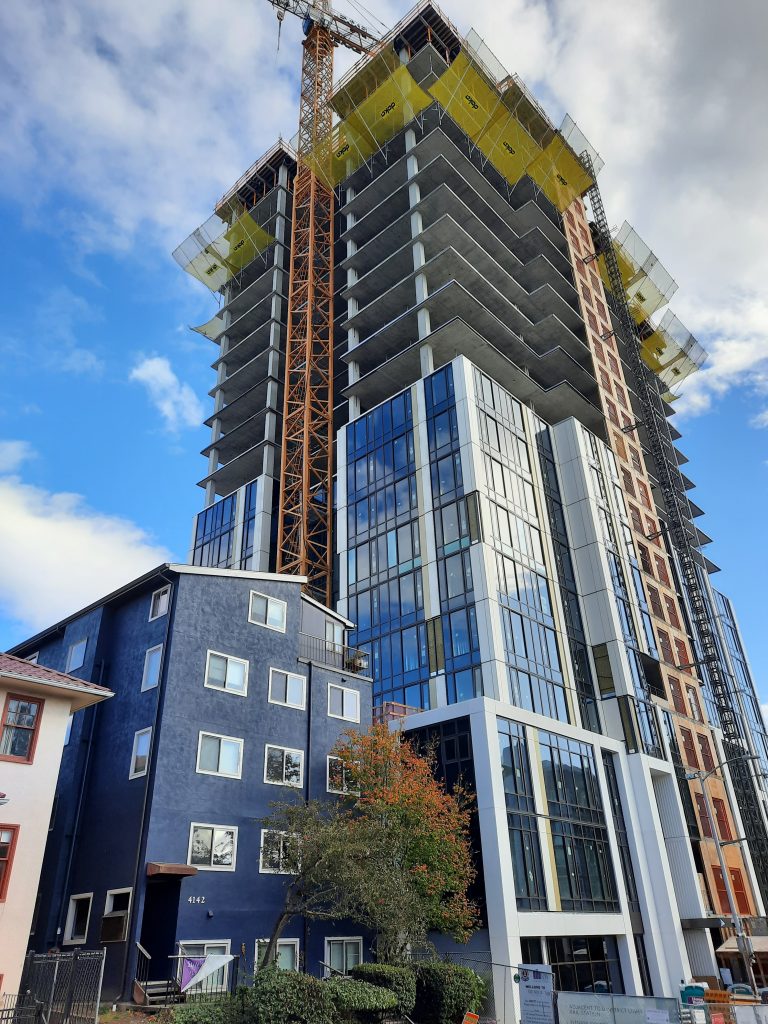
Greystar’s Lakeview Tower has nearly reached its full height. The 24-story will have 226 homes and no parking. (Photo by Doug Trumm) 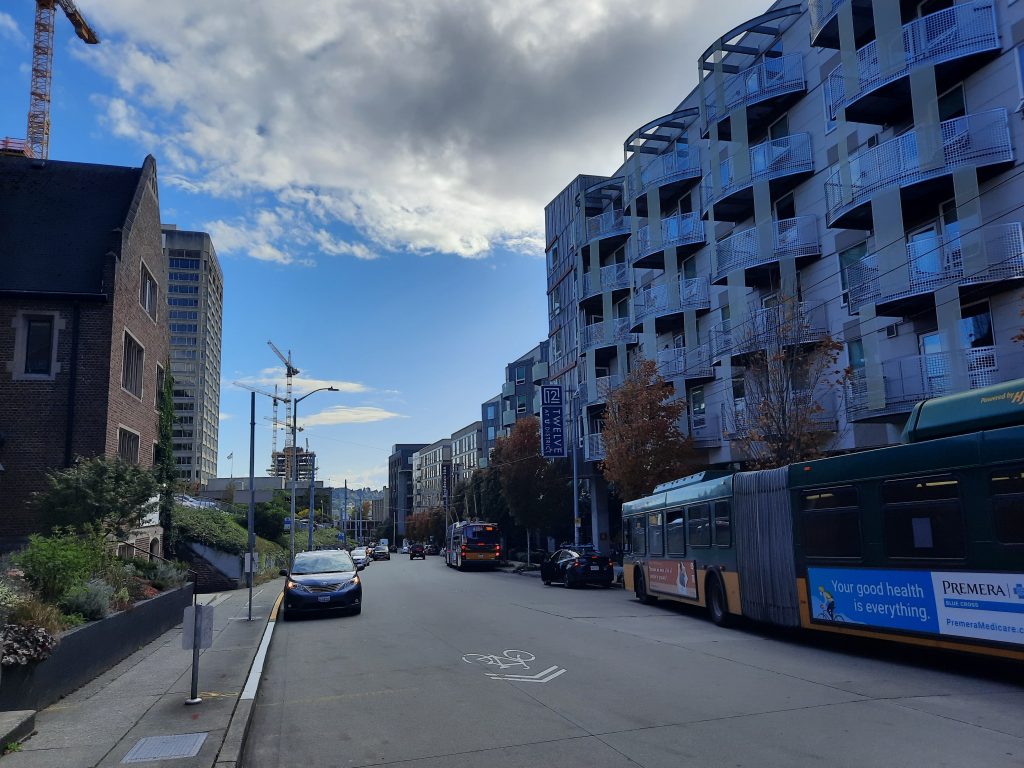
The six-story Twelve at U District building is on the right with new towers rising along 12th Avenue NE. (Photo by Doug Trumm) 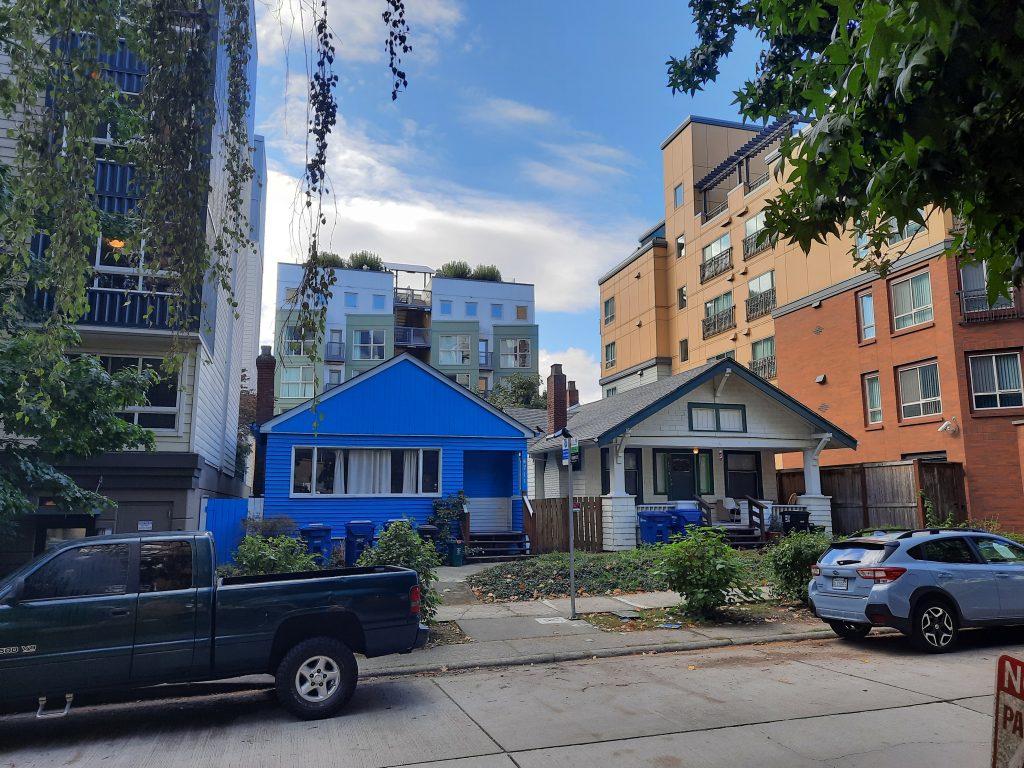
A few single family homes still dot the U District as midrise and highrises go in around them. (Photo by Doug Trumm) 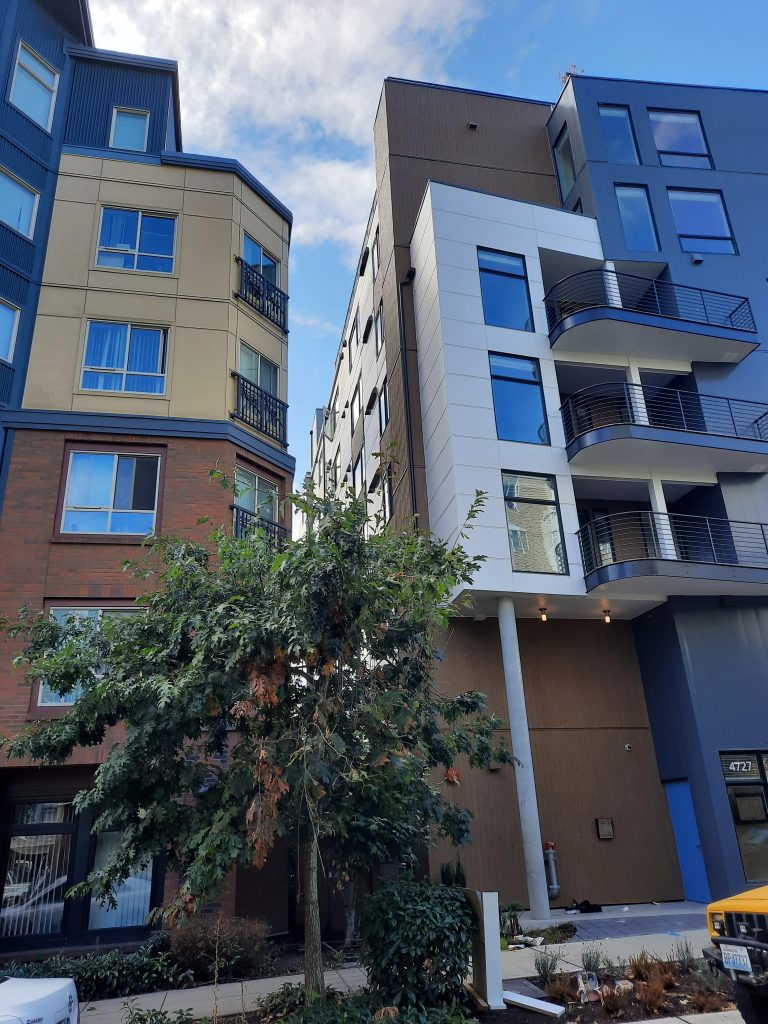
Some of U District’s recent lowrise and midrise development has very thoughtful design, like these two apartment buildings on 12th Avenue NE. 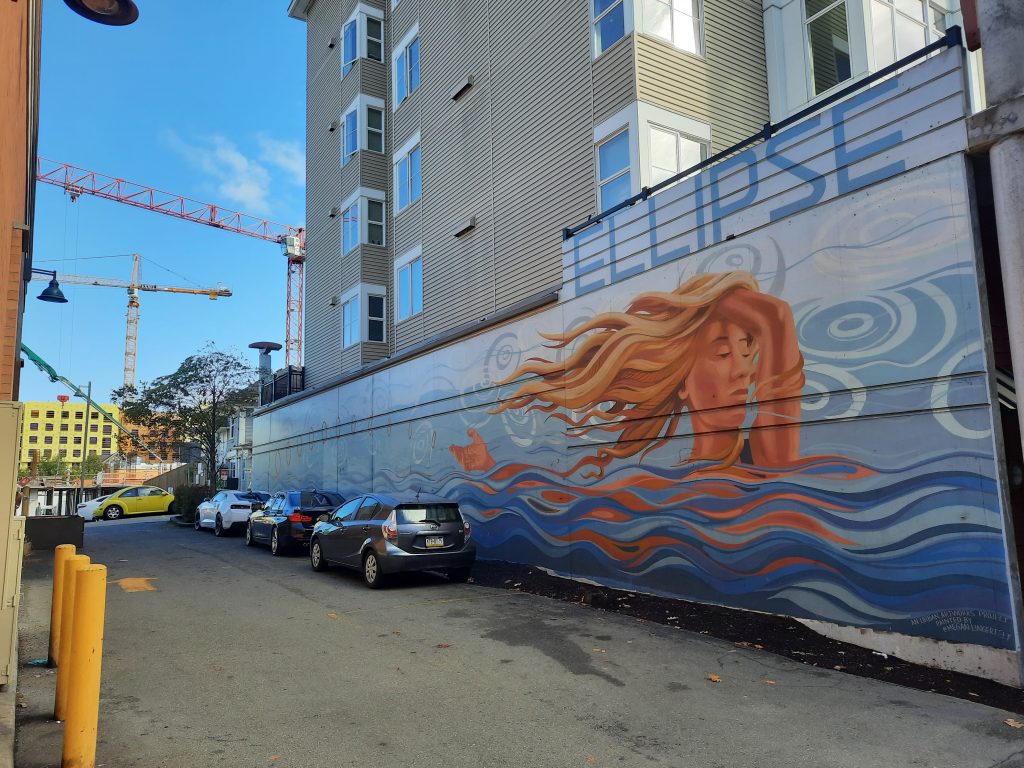
U District is already dense, but it will get decidedly more so. (Photo by Doug Trumm) 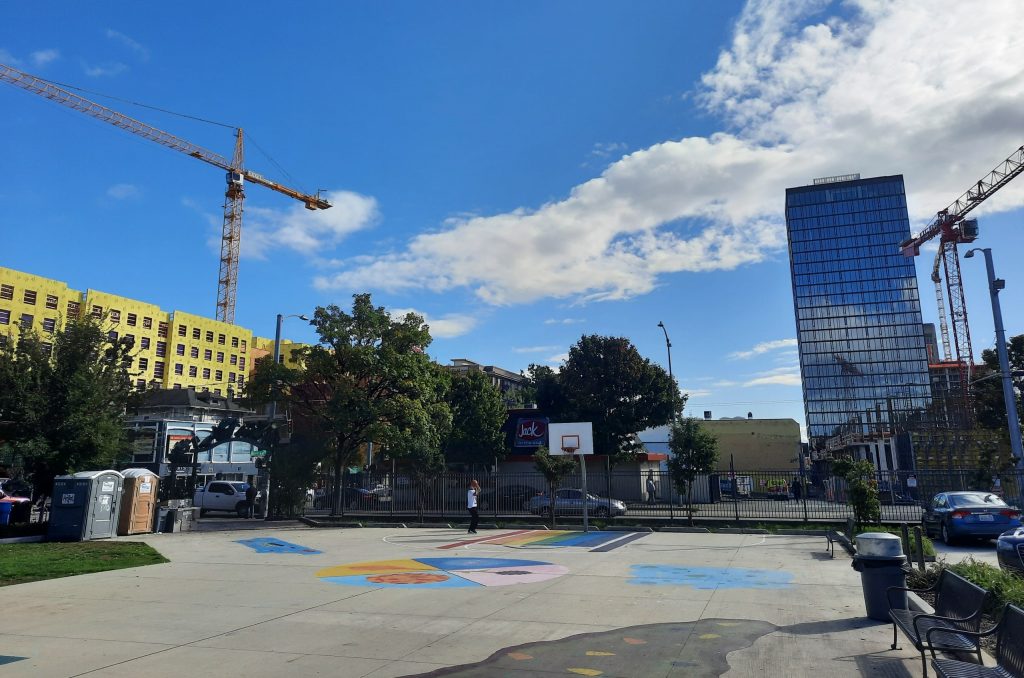
U District Playground with cranes. 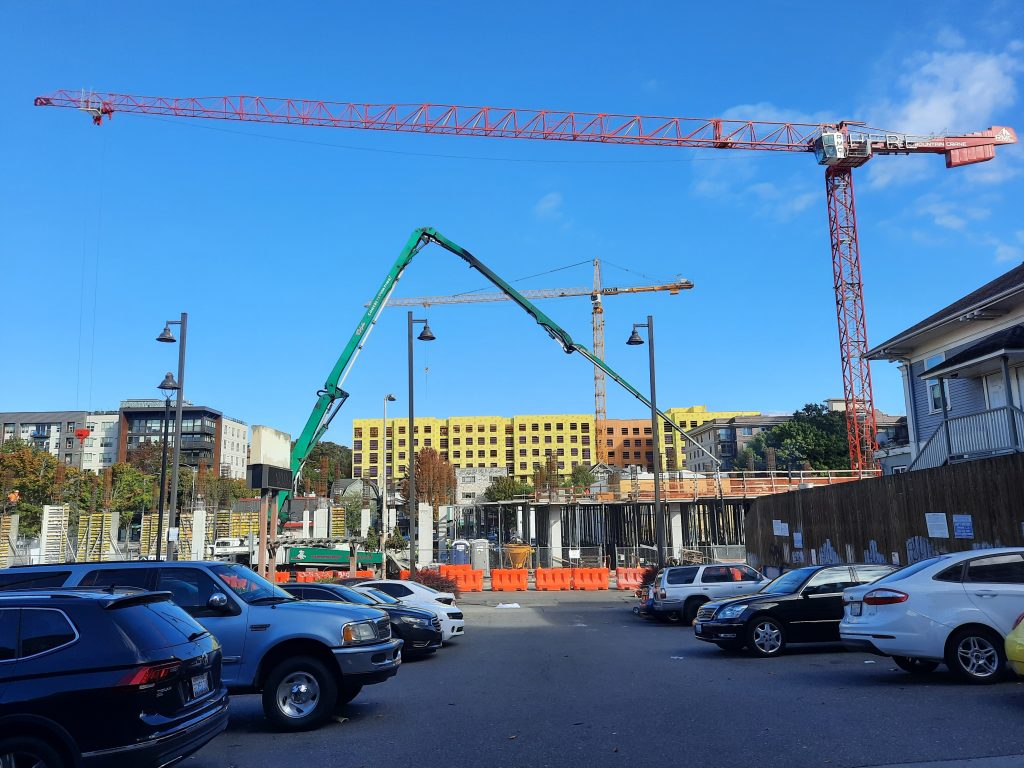
From the Cedars of Lebanon parking lot at least three huge construction sites are visible. A seven-story building in the distance has topped out, but the tower on Brooklyn is just getting started. (Photo by Doug Trumm) 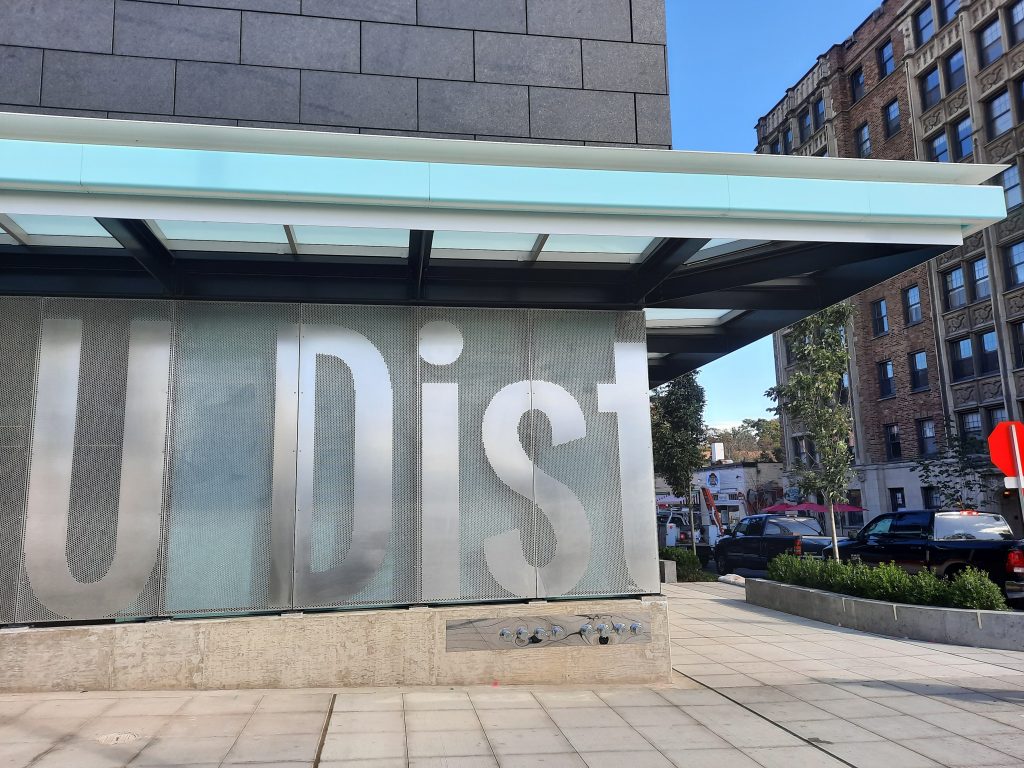
U District Station with 43rd Street. 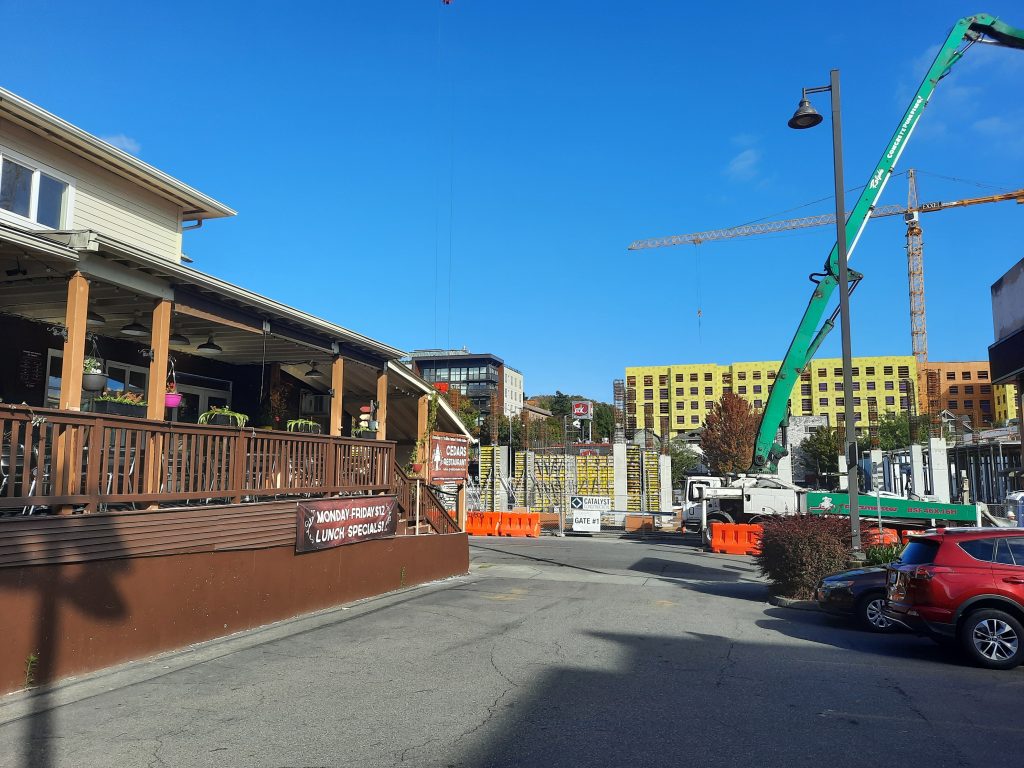
Cedars is a standby for Indian and Mediterranean food. It is going to be surrounded by towers soon. (Photo by Doug Trumm) 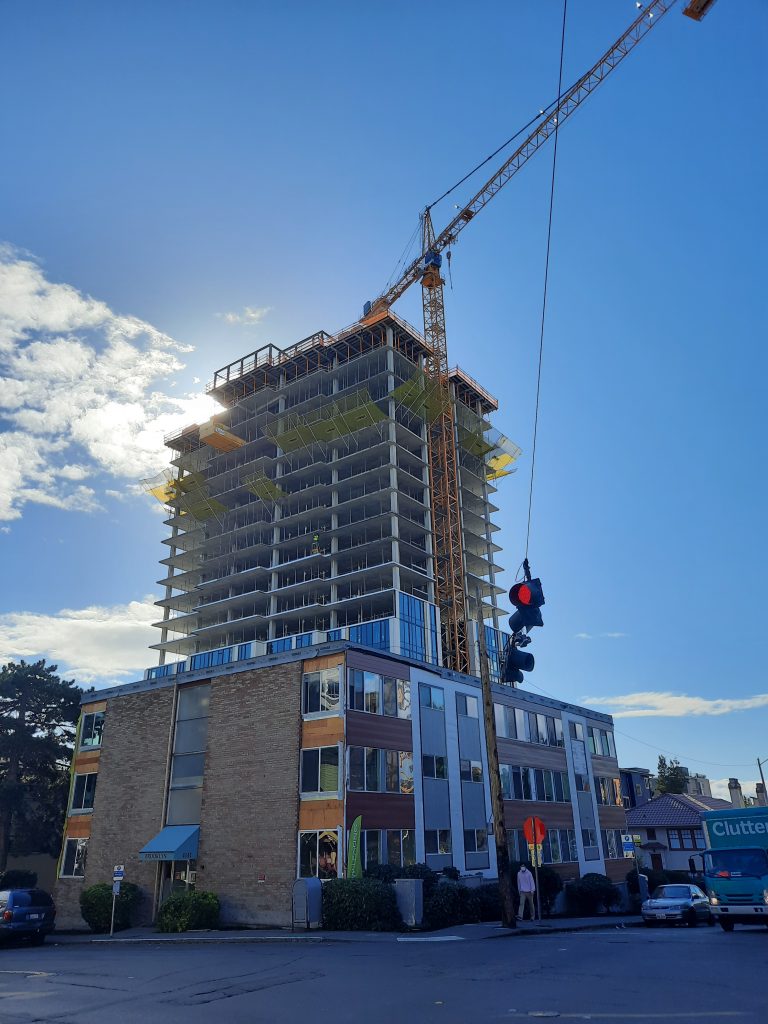
Another angle on Lakeview tower. 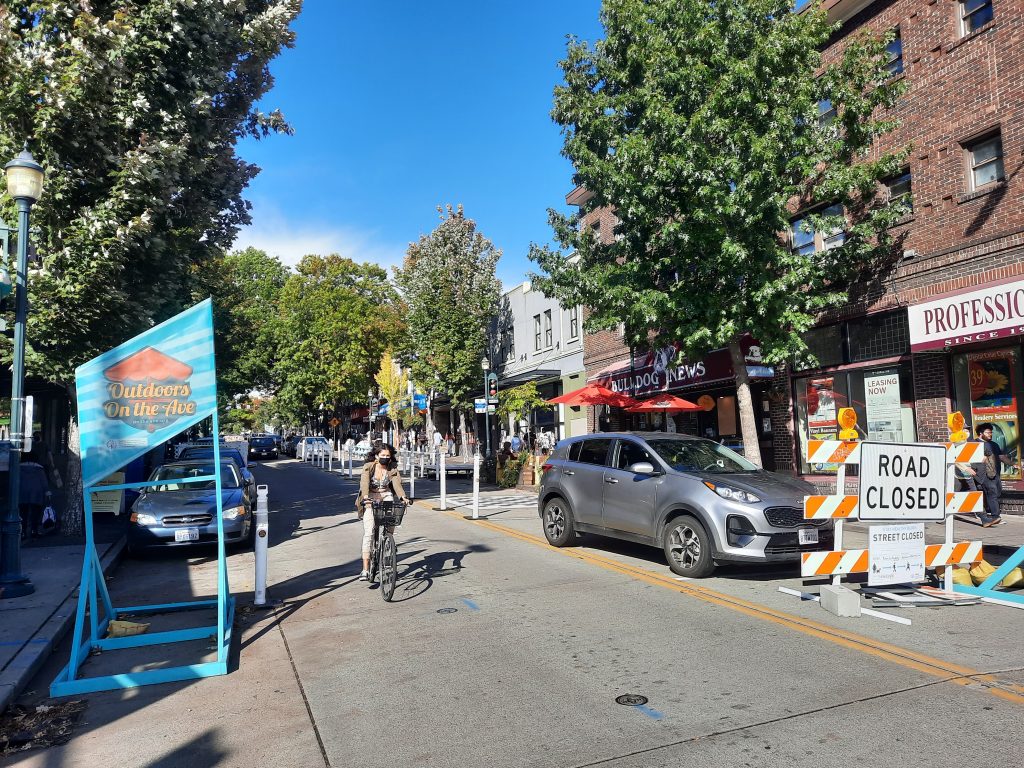
A woman bikes down The Ave, where at the time only the southbound lane was open north of 42nd Street to make room for street cafes. 
Pedestrian cross the busy intersection of University Way (aka The Ave) and NE 42 Street, along which towers rise in the background. (Photo by Doug Trumm) 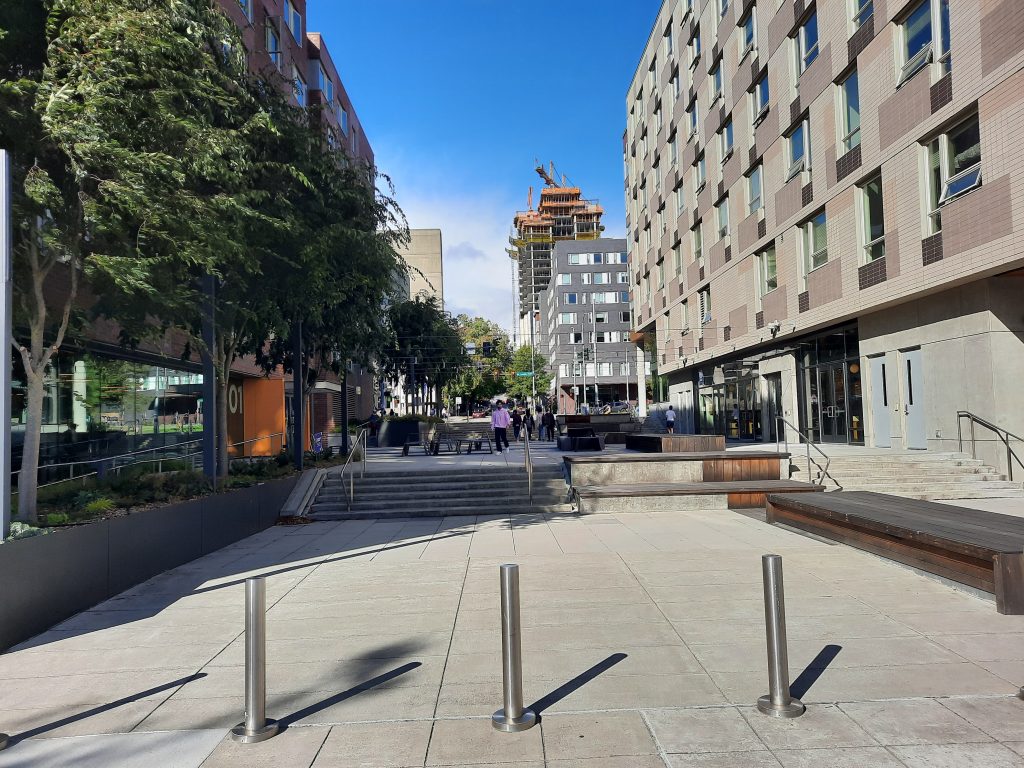
The residential towers rising on 12th Avenue NE are now visible from the dorms along Campus Parkway. (Photo by Doug Trumm) 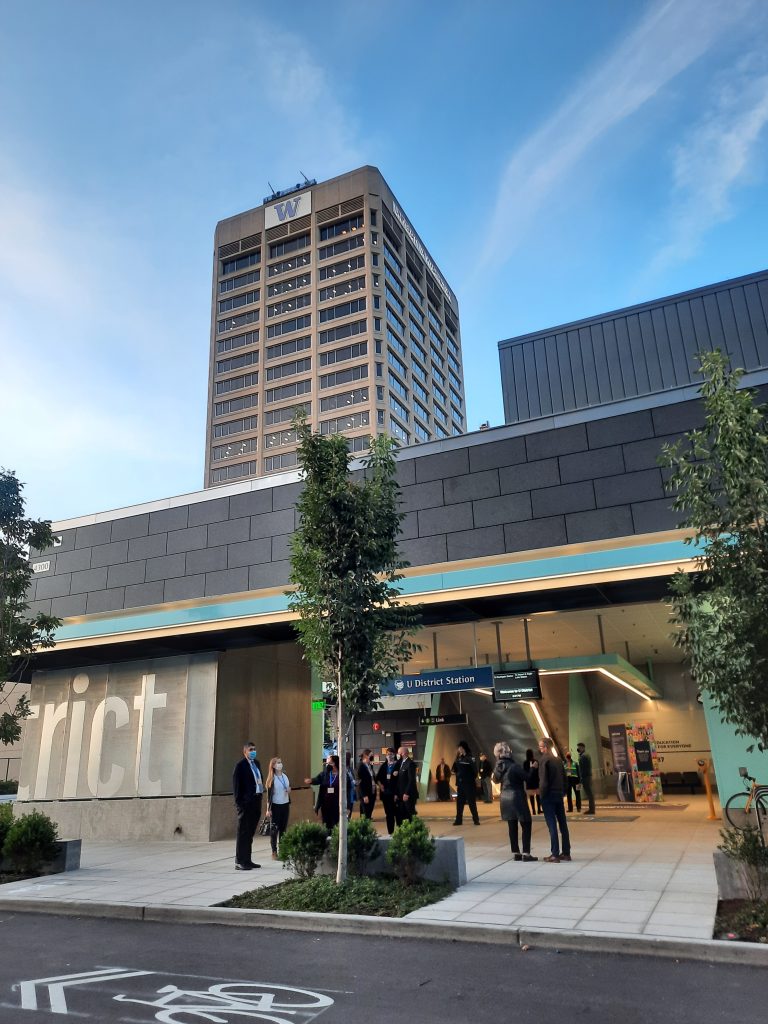
43rd Street station entrance.
More than a dozen towers are on the way in The U District and the success of those projects could inspire more near transit stations across the region — breaking free of the pattern of Downtown Seattle and Downtown Bellevue being the only major highrise centers. That could help alleviate our regional housing shortage and put more homes on the doorstep of rapid transit. But will local zoning allow it?
Doug Trumm is publisher of The Urbanist. An Urbanist writer since 2015, he dreams of pedestrian streets, bus lanes, and a mass-timber building spree to end our housing crisis. He graduated from the Evans School of Public Policy and Governance at the University of Washington in 2019. He lives in Seattle's Fremont neighborhood and loves to explore the city by foot and by bike.

